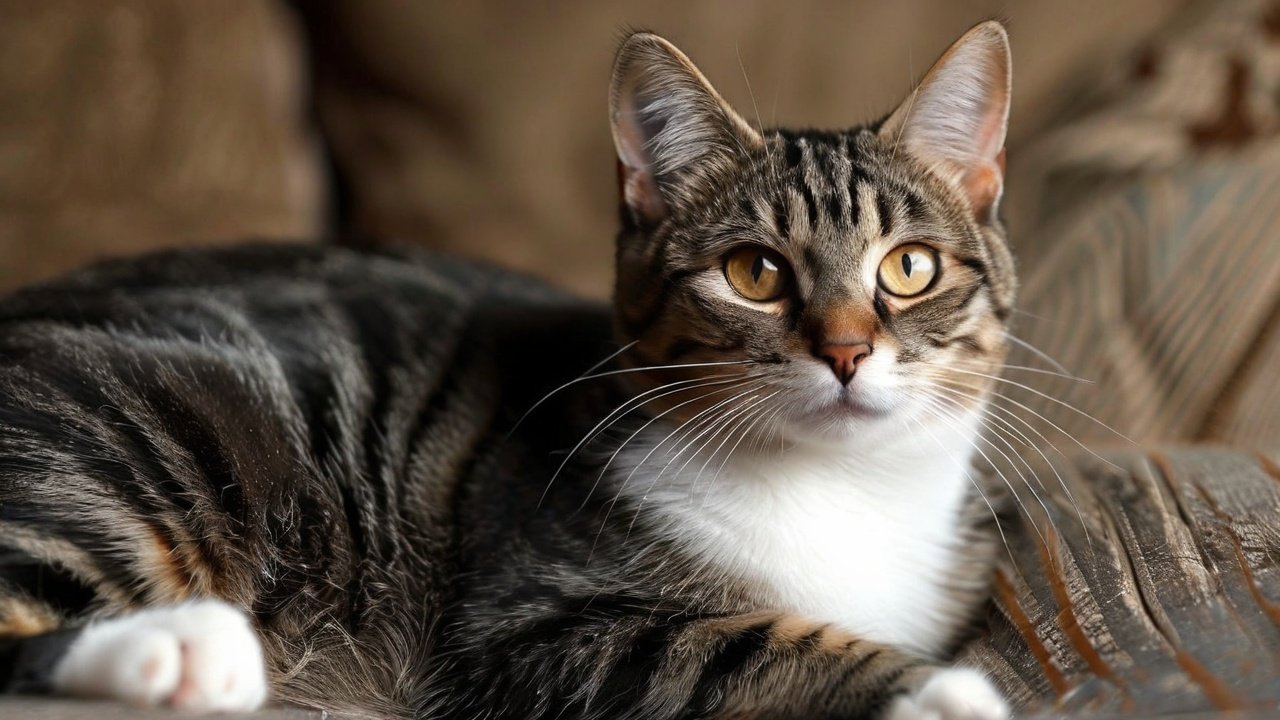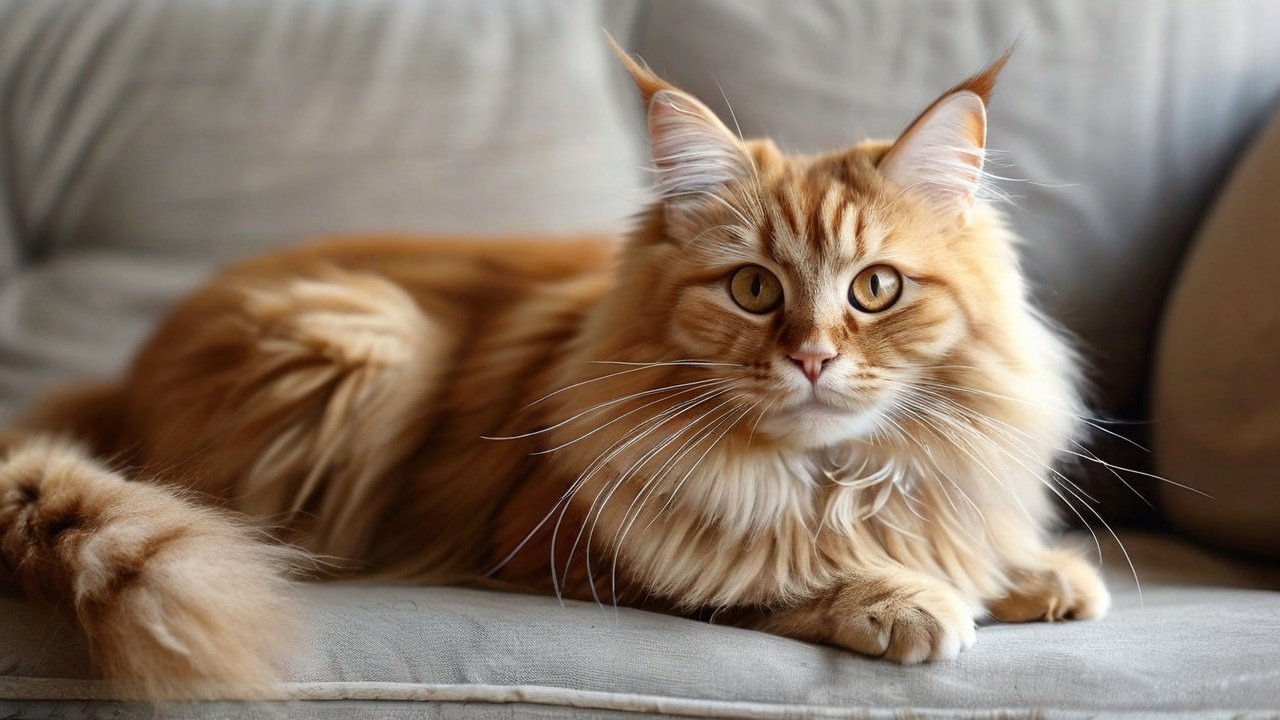If you’re looking for a cat that embodies both elegance and warmth, the Birman might be your perfect match. These beautiful felines are known for their long, silky coats, expressive eyes, and gentle, affectionate personalities. But there’s much more to the Birman than just its striking looks.
A Legend of Devotion: The Birman’s Origins
The Birman cat’s story is one of legend and careful breeding. The breed’s origins are linked to the ancient temples of Burma (now Myanmar). The legend goes that a temple priest’s sacred white cat, named Sinh, was guarding a dying priest when its white fur turned a pale gold, and its eyes became sapphire blue, symbolizing the priest’s connection to the gods.
This sacred cat, believed to be a reincarnation of a Buddhist god, is said to have bestowed a golden color on the priest’s other cats, making them sacred companions. These cats, with their striking appearance and gentle personalities, are believed to be the ancestors of the modern Birman cat.
The Birman: A Study in Elegance
A Long, Silky Coat: The Birman’s most distinctive feature is its long, silky coat, which falls to the ground in a graceful cascade. This beautiful coat is soft and plush, adding to the breed’s elegance and charm. The Birman comes in a variety of colors and patterns, with the most common being the seal point, chocolate point, blue point, lilac point, red point, cream point, tabby point, and lynx point.
Expressive Blue Eyes: The Birman has large, almond-shaped eyes that are always a striking blue color. These eyes reflect the breed’s gentle and affectionate nature, adding to its captivating charm.
White “Gloves” and “Mittens”: Another notable characteristic of the Birman is its white markings. They typically have white “gloves” on their paws, and white “mittens” on their feet.
A Case Study: The Adventures of Snowball
Snowball, a 5-year-old Birman, is a perfect example of the breed’s unique personality. Her owner, Emily, describes her as “a gentle giant with a heart of gold.”
“Snowball is always up for a cuddle,” Emily says. “She loves to snuggle on the couch and follow me around the house. She’s also very playful, especially with feather toys. She’s a bit of a comedian, always finding new ways to entertain us.”
Snowball’s long, flowing coat adds to her elegance. “It’s like a soft cloud,” Emily says. “I love to brush her coat and watch her purr with contentment.”
Personality and Temperament:
Affectionate and Gentle: Birman cats are known for their gentle and affectionate personalities. They crave human companionship and love to be petted and cuddled. They’re often described as being “dog-like” in their loyalty and devotion to their owners. They are known for their gentle and patient nature.
Playful and Intelligent: Despite their gentle nature, Birmans are playful and intelligent. They enjoy interactive games, chasing toys, and exploring their surroundings. They’re also known for their curiosity and ability to learn new tricks.
Adaptable and Social: These cats are adaptable and social. They adjust well to different environments and lifestyles, making them great companions for families with children and other pets. They are often described as being friendly and outgoing, enjoying the company of both humans and other animals.
The Birman: A Detailed Look
A Breed with a Long History: The Birman is a relatively old breed, having been recognized by cat registries in the early 20th century. The breed has gained a devoted following for its unique combination of elegance and personality.
A Rare Breed: The Birman is considered a rare breed, as it takes careful breeding programs to maintain its distinctive traits and ensure its health.
Health and Lifespan:
Generally Healthy: Birman cats are generally a healthy breed. They’re known for their robust constitution and strong immune systems. However, they’re prone to some common feline health issues, such as hypertrophic cardiomyopathy (HCM) and polycystic kidney disease (PKD). Regular veterinary checkups and preventive care are crucial to ensure their well-being.
Lifespan: Birman cats typically have a lifespan of 12 to 15 years, with proper care and attention.
Grooming:
Regular Brushing: The Birman’s long coat requires regular grooming to prevent mats and tangles. Brushing a few times a week is usually sufficient. During shedding season, daily brushing may be necessary.
Occasional Baths: Occasional baths may be necessary to keep the coat clean and free from debris. Choose a cat-specific shampoo and conditioner, and be careful to avoid getting water in their ears.
Living with a Birman:
Active Lifestyle: Birman cats are active cats and need plenty of exercise and mental stimulation. Provide them with climbing trees, scratching posts, and interactive toys to keep them entertained.
Socialization: Early socialization is crucial for Birman cats to develop into well-adjusted cats. Introduce them to other pets and people from a young age to help them become comfortable in different environments.
Is the Birman Right for You?
The Birman is an excellent choice for owners seeking a gentle, affectionate, and intelligent companion. They’re adaptable and social cats, making them well-suited for families with children and other pets.
Before welcoming a Birman into your home, consider these factors:
- Are you ready for a playful and energetic cat?
- Can you provide regular playtime and mental stimulation?
- Do you have the time and resources to meet their needs?
If you can answer “yes” to these questions, then a Birman may be the perfect fit for you.
The Birman: A Unique and Rewarding Experience
The Birman is more than just a cat with a long, flowing coat. They’re a unique and captivating breed with a personality that’s both charming and endearing. Their playful nature, intelligence, and affectionate temperament make them an excellent choice for cat lovers seeking a loyal and rewarding companion.
A Look Deeper into the Birman’s Personality
The Independent Side of the Birman: While they’re known for their affectionate nature, Birman cats can also be quite independent. They enjoy their own company and often find ways to entertain themselves. This independent streak makes them well-suited for owners who are out of the house for part of the day, as long as they have adequate stimulation and enrichment.
The Adventurous Birman: These cats are naturally curious and love to explore. They’re often found venturing into new areas of the house, investigating objects, and climbing to high places. If you have a cat tree or other climbing structures, your Birman will likely make good use of them.
The Curious and Inquisitive Nature: Birman cats are highly intelligent and observant. They’re often seen watching their owners with keen interest, observing their routines and activities. This curiosity makes them entertaining companions, as they’re always learning and adapting to new situations.
Training a Birman:
A Quick Learner: Birman cats are relatively easy to train, thanks to their intelligence and eagerness to please. They can learn simple tricks, such as fetching toys, coming when called, and jumping through hoops.
Positive Reinforcement: The key to training a Birman is positive reinforcement. Use treats, praise, and play to motivate them and reward desired behaviors.
The Importance of Socialization:
Social Butterflies: Birman cats are known for being social cats, but early socialization is still important for their well-being. Introducing them to different people, pets, and environments from a young age helps them develop into confident and well-adjusted adults.
Avoiding Negative Experiences: It’s crucial to ensure that Birman cats have positive early experiences with other animals and people. Negative experiences can lead to fear, anxiety, and aggression.
Conclusion:
The Birman is a captivating breed with a unique and endearing personality. Their long, flowing coat, playful nature, and affectionate temperament make them a truly special companion. If you’re looking for a cat who’s both elegant and full of character, the Birman might just be the perfect fit for you.









